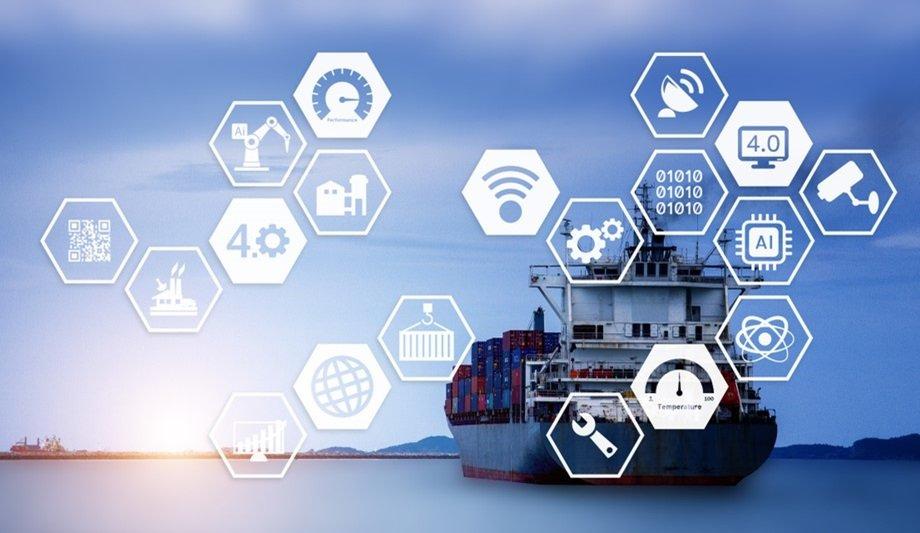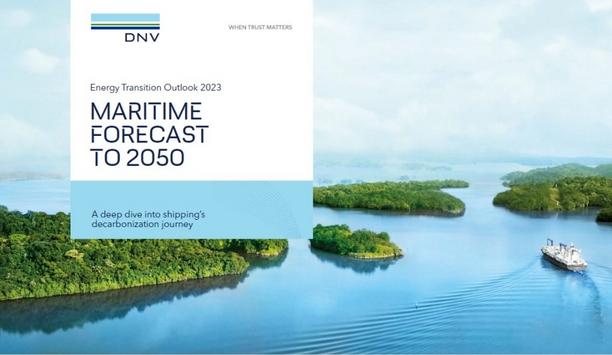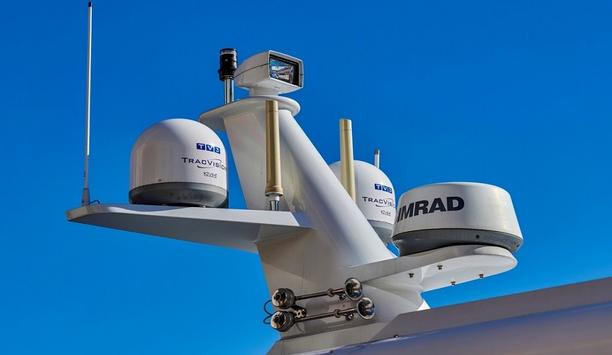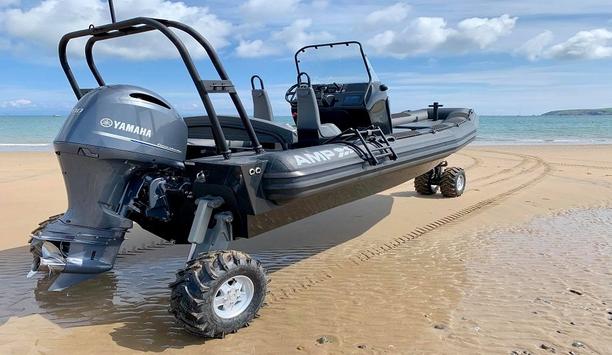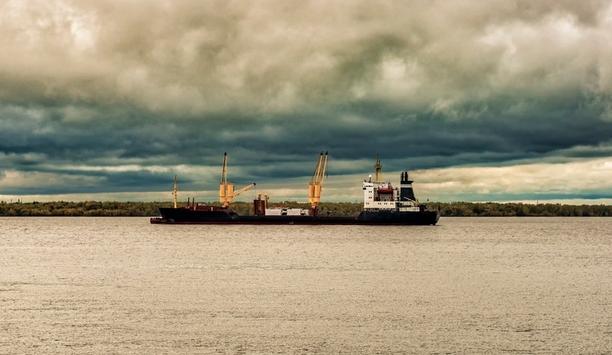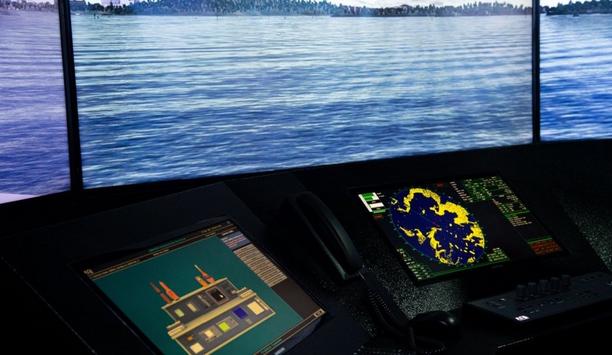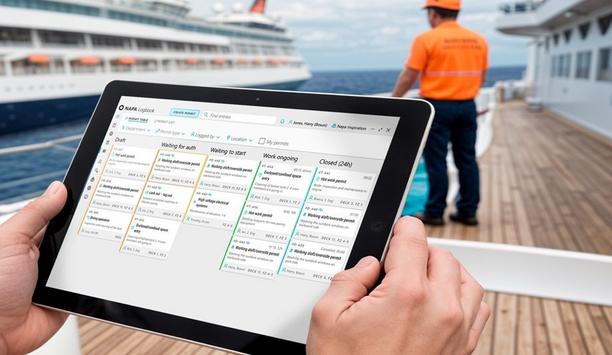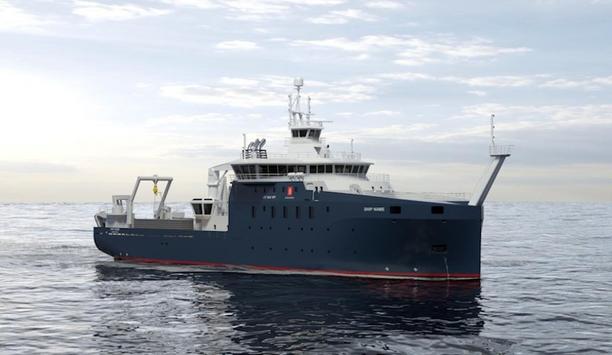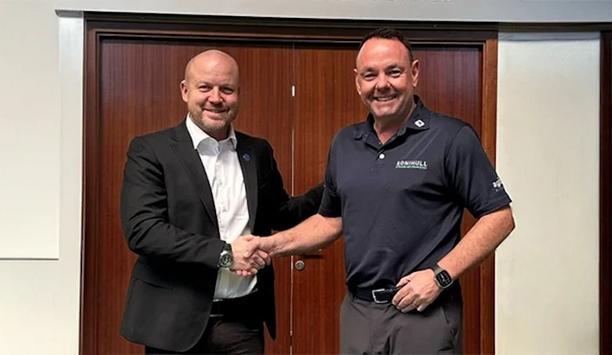Augmented reality (AR) is making waves across various industries, and maritime is no exception. For maritime professionals, AR offers practical, real-time solutions that enhance safety, optimise operations, and improve decision-making both at sea and onshore.
Whether it’s helping crews navigate complex environments, assisting in ship maintenance, or providing on-the-job training, AR’s ability to blend digital information with the physical world is proving invaluable in the fast-paced and challenging maritime environment. This article explores the benefits, applications, and potential of AR in the maritime industry.
Understanding AR and its intent
Augmented reality (AR) overlays digital content—such as data, graphics, and 3D models—onto the real-world environment, enhancing users’ perception of their surroundings.
Unlike virtual reality (VR), which creates entirely simulated environments, AR supplements the real world with additional information that can be viewed through devices like smartphones, tablets, or AR glasses.
- Accuracy, efficiency, and safety
The core objective of AR in the maritime industry is to create a more intuitive and information-rich working environment
In the maritime context, AR intends to enhance the accuracy, efficiency, and safety of various operations. By providing real-time data and visuals, AR allows maritime professionals to make better-informed decisions, whether they’re navigating a vessel through busy waters, inspecting machinery, or managing cargo in a port.
The core objective of AR in the maritime industry is to create a more intuitive and information-rich working environment, reducing risks, preventing errors, and increasing operational efficiency.
AR applications in maritime operations
One of the most significant applications of AR in the maritime industry is in navigation. AR can assist ship officers by overlaying critical navigation data—such as chart information, vessel traffic, weather conditions, and obstacles—directly onto the real-time view of the sea.
This helps enhance situational awareness, particularly in congested waterways or during low-visibility conditions like fog or storms. With AR, navigators can visualise information directly in their line of sight, minimising the need to shift focus between different instruments or screens.
- Maintenance and repair operations
Maintenance and repair operations are another area where AR has proven to be highly effective. Technicians can use AR glasses or tablets to access real-time information on ship components, including interactive 3D models, schematics, and procedural guides.
This allows for faster and more accurate repairs, reducing downtime and the need for specialised training. AR can also connect remote experts with on-site technicians, enabling real-time support and troubleshooting.
- Training and simulation
Crew members can undergo immersive training sessions where they interact with AR-enhanced environments
Training and simulation are other critical areas benefiting from AR. New crew members can undergo immersive training sessions where they interact with AR-enhanced environments, practicing tasks such as emergency procedures or cargo handling in a risk-free setting.
This improves skill retention and reduces the time required to get new hires up to speed. In ports, AR can assist with cargo management by displaying real-time data on container contents, destination, and status. This streamlines the loading and unloading process, reducing errors and improving overall port efficiency.
Benefits of AR for maritime stakeholders
The integration of AR technology delivers a wide array of benefits to different maritime stakeholders, from shipowners and operators to port managers and regulators.
For shipowners and operators, AR enhances the safety and efficiency of vessel operations. Improved navigation capabilities lead to fewer accidents, while real-time maintenance support reduces the risk of machinery failures and extends equipment lifespan.
- Immersive, on-the-job learning experiences
Additionally, AR can cut training costs by providing immersive, on-the-job learning experiences that don’t require expensive simulators or extended training periods. Port operators also benefit from AR technology.
Enhanced cargo management, optimised logistics, and real-time tracking of goods improve turnaround times and reduce operational bottlenecks. With AR’s ability to overlay data onto physical containers or equipment, ports can achieve greater accuracy in inventory management and resource allocation.
- Real-time data and augmented visuals
AR can streamline the inspection process, ensuring that ships and ports meet regulatory requirements
For manufacturers and engineers, AR enables the visualisation of complex equipment and components in a real-world context. This can facilitate better communication between shipbuilders, designers, and engineers, leading to more accurate construction and faster problem-solving when issues arise. Regulators and maritime authorities can use AR to improve safety inspections and compliance checks.
By providing inspectors with real-time data and augmented visuals, AR can streamline the inspection process, ensuring that ships and ports meet regulatory requirements more efficiently.
Encouraging Collaboration Across the Maritime Ecosystem
One of the most exciting aspects of AR is its potential to foster collaboration among various maritime stakeholders.
By connecting on-site personnel with remote experts through AR-enabled devices, maritime operators can access specialised knowledge without requiring experts to be physically present. This promotes better teamwork across geographical distances, improving problem-solving and decision-making in real-time.
- Reduces downtime
For example, when a ship experiences technical issues in a remote location, AR allows an engineer onshore to guide a crew member step-by-step through the repair process, using visual overlays and interactive tools to ensure accuracy.
This reduces downtime and ensures that operations can continue without the need for costly or time-consuming travel.
- Reduces errors
By combining AR with digital twin technology, maritime professionals can access real-time digital replicas
Collaboration is also enhanced in ship design and construction. AR allows shipbuilders, designers, and engineers to visualise and manipulate 3D models in a real-world environment, making it easier to collaborate on complex projects and reduce errors during the construction phase.
Moreover, AR can integrate with broader industry initiatives, such as digital twins and automation. By combining AR with digital twin technology, maritime professionals can access real-time digital replicas of ships or port equipment, enabling more effective monitoring, predictive maintenance, and resource management.
Misconceptions and challenges in adopting AR
Despite its potential, some misconceptions about AR remain within the maritime industry. One common misconception is that AR is solely for high-tech, cutting-edge operations and isn’t suitable for traditional maritime businesses.
However, AR technology is highly scalable, and its applications can be adapted to a wide range of maritime operations, from small vessels to large container ships and ports. Another misconception is that AR requires significant upfront investment in expensive hardware and software.
- Long-term savings
While initial costs can be high, particularly for advanced AR glasses and devices, the long-term savings in operational efficiency, reduced training times, and improved safety often outweigh these costs.
Additionally, more affordable AR solutions are emerging, making the technology accessible to a broader range of operators.
- Enhance focus and reduce cognitive load
AR devices could create, particularly in high-stress environments like ship navigation or cargo handling
There are also concerns about the potential distraction that AR devices could create, particularly in high-stress environments like ship navigation or cargo handling.
However, when implemented thoughtfully, AR is designed to enhance focus and reduce cognitive load by delivering critical information directly to the user’s line of sight, rather than requiring them to divert attention to multiple screens or devices.
Coordinating AR with Industry Initiatives and Future Trends
AR is increasingly being integrated with other technological advancements in the maritime sector, including automation, the Internet of Things (IoT), and digital twin technologies.
By providing real-time insights and data visualisation, AR can help facilitate the use of autonomous ships and enhance the monitoring and management of connected maritime systems. As the industry continues to prioritise sustainability, AR can also play a role in promoting greener practices. By optimising navigation routes and improving fuel efficiency, AR can help ships reduce emissions and minimise their environmental impact.
- AR-enhanced training
As the technology continues to evolve, its applications will expand, offering new ways to improve safety
Furthermore, AR-enhanced training can focus on eco-friendly practices, reinforcing the maritime industry’s commitment to sustainability. Looking forward, AR will likely play a crucial role in the future of maritime operations.
As the technology continues to evolve, its applications will expand, offering new ways to improve safety, efficiency, and collaboration across the industry.
AR navigating the challenges of the 21st century
Augmented reality is poised to become a transformative tool in the maritime industry, offering tangible benefits in safety, operational efficiency, training, and collaboration.
By integrating AR technology into maritime operations, professionals can stay ahead of industry challenges, enhance decision-making, and foster greater collaboration across the global supply chain. With the right approach, AR will not only improve day-to-day operations but also help future-proof the maritime industry as it navigates the challenges of the 21st century.
